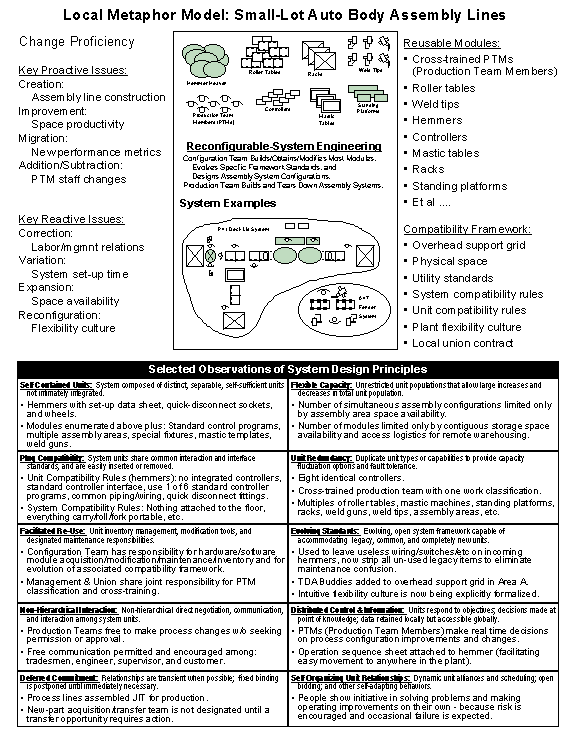Rick Dove, Paradigm Shift
International, www.parshift.com, ![]()
Every business unit has its own brand of tactical chaos it manages to deal with - intuitively - implicitly - routinely - automatically - without explicit process knowledge rooted in change proficiency. Yet at the same time virtually every business unit today is facing strategic challenges that cry out for this same innate competency.
What are the common underlying principles at work in these implicitly managed tactical successes? Can they be codified and applied explicitly at the strategic level? I think so - and so do others who are searching in this year's Discovery Workshops for these common principles and a way to package them for ready application. At this point we've completed four of the 1997 series of eight workshops, and have some progress to share and some promising tools to test.
To illustrate, we will use a practice from the General Motors Pittsburgh metal fabrication plant analyzed in our second workshop this year (this column, Aug. '97). In brief review: this plant stamps and assembles low volume, after-model-year, auto-body service parts. With current responsibility for some 1000 assemblies the plant constructs a custom assembly line for a specific part, produces a few hundred doors maybe, tears down that assembly line and builds another in its
A configuration sheet like the one below guides the production team in constructing the assembly line from common reusable modules of various types. The accompanying Local Metaphor Model synopsizes the underlying principles at work in this just-in-time assembly line construction approach - and graphically depicts the concept of assembling reconfigurable systems from reusable modules. When coupled with the practice description (Aug '97) this tool can be employed outside the local environment as well.
Previously we have discussed the power of metaphors to create and communicate insight (May '97). The trick is to find a meaningful metaphor that can transfer this leveragable knowledge among a specific group of people.
The Process: An outside realsearch team (Jun '97) works side-by-side with local personnel to examine two practices that exhibit high change proficiency. For each practice the structured analysis process builds a model of the change proficiency issues (proactive and reactive response requirements) and the architecture (reusable modules, compatibility framework, system engineering responsibilities). Then we examine these architectures for local manifestations of ten specific design principles.
The combined results produce two local metaphor models for change proficiency - local in that they are present at the plant site and respected intuitively for their capabilities - metaphor models in that the analysis explicitly illuminates common underlying principles responsible for this change proficiency.
Then we examine a third area of strategic interest that isn't yet designed, or must become more adaptable, and employ the metaphors to guide the application of design principles. This exercise at GM's workshop was focused on designing a process for capturing and mobilizing core competency knowledge, and is next column's subject.
